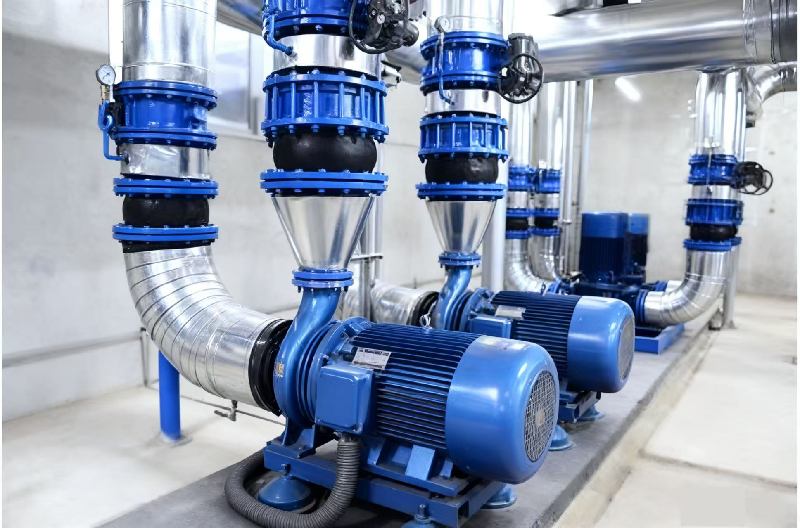Methods for Flow Regulation of Pipeline Centrifugal Pumps
2025-10-22
1. Outlet Throttling
For low and medium specific speed pumps, this is a common and economical flow regulation method, though it is generally limited to such pumps. Partially closing any type of valve on the outlet pipeline increases the system head, causing the system head curve to intersect the pipeline pump's head curve at a smaller flow rate.
Outlet throttling shifts the operating point to a lower efficiency region and creates power loss at the throttle valve. This can be significant for large pump installations, where higher-investment regulation methods may prove more economically attractive. Throttling to a closed position can cause fluid overheating inside the pump; a bypass line can be used to maintain the necessary minimum flow, or alternative regulation methods can be employed—this is particularly important for pumps handling hot water or volatile liquids.
2. Suction Throttling
If sufficient NPSH (Net Positive Suction Head) is available, throttling in the suction pipeline can save some power. Jet engine fuel pipeline pumps often use inlet throttling because outlet throttling can cause liquid overheating or vaporization. At very low flow rates, the impellers of these pumps are only partially filled with liquid, so input power and temperature rise are approximately 1/30 of those when the impeller is fully operational during outlet throttling.
The flow rate of condensate pumps is usually controlled by submergence depth, which is equivalent to inlet throttling. Special designs can minimize cavitation damage to these pumps, though their energy efficiency becomes quite low.
3. Bypass Regulation
All or part of the flow from the pipeline pump's discharge line can be diverted through a bypass pipe back to the pump's suction port or another appropriate point. The bypass can be equipped with one or more flow orifices and suitable control valves. A metering bypass is typically used to reduce the flow of boiler feed pumps, mainly to prevent overheating. If the bypass diverts excess flow from a propeller pump instead of using outlet throttling, significant power savings can be achieved.

4. Speed Regulation
This method minimizes the required power and eliminates overheating during flow regulation. Steam turbines and internal combustion engines can easily adapt to speed regulation with little additional cost. Various mechanical, magnetic, and hydraulic variable speed devices, as well as DC and AC variable speed motors, can be used for speed adjustment.
Variable speed motors are usually expensive and are only justified after economic studies for specific cases. Adjustable vane regulation has been studied: for pumps with a specific speed of 5700 (2.086), adjustable guide vanes installed before the impeller are effective. These vanes can generate positive pre-rotation, reducing head, flow, and efficiency—though their Adjusting effect is relatively minor for other specific speeds.
In Europe, large energy storage pumps for power generation successfully use adjustable outlet diffuser vanes. Propeller pumps with variable-pitch blades have also been developed, achieving a wide flow range with constant head and relatively small efficiency losses. However, these methods are overly complex and costly, limiting their practical application.
5. Air Injection
Injecting air into the pump's suction port is another flow regulation method, which can save some power compared to outlet throttling. However, air in the transported liquid is generally undesirable, and excessive air risks losing the pump's priming head. Thus, this method is rarely used in practice except for specific cases.




